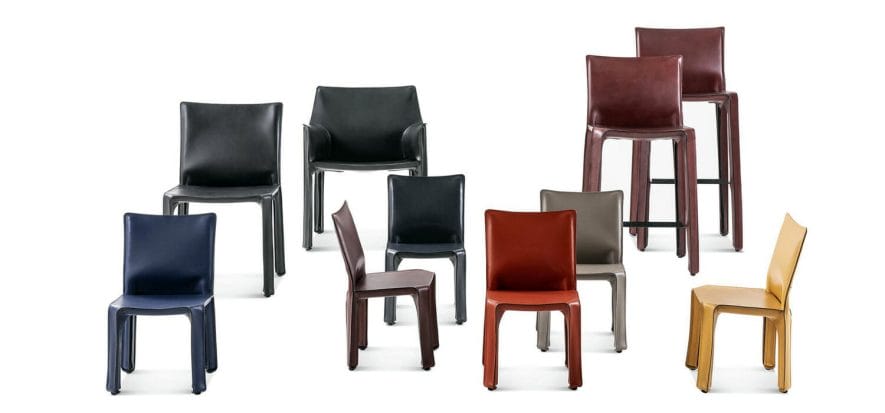A chair that, in its design, mimics in structure and upholstery, the same relation between the human skeleton and skin. Cassina’s Cab, showcases that leather isn’t simply an aesthetic detail, but rather a way to showcase identity. Mario Bellini explained this concept to Archiportale: when he had worked in 1977 on Cassina’s collection piece, he thought “of a new seat design, all made in leather”, that is able to be organic in its own way. And, we add, a design able to brake apart from the seat offering from the time. The project was such a success that Cab “is today very cloned”, says Mr. Bellini. While Cassina, as shown by the collaboration with Santoni in 2019, continues to keep the myth alive.
Cassina’s Cab
“I needed 20 years to find the courage to design this seat- continues Bellini -. Cab was designed as a simple seat, one support for the back and 4 legs to stand on. The steel frame was sown onto a leather form that was extended, as skin would on a skeleton. The result was an organic and structural symbiosis”. Since leather is so important, its tanning process can’t be left to chance. As reported by Archiportale, Cab’s upholstery is made by 21 pieces of leather “treated individually to then undergo 22 manual steps”. The skiving process allows operators to thin the material, while it used to be that once the stitching was done, “the covering would be placed on the steel frame and then closed with zips as a sartorial suit”.
The success
Cab’s global success led it to enter the MoMa New York’s collection. The design, throughout time, extended into a wide arrange of products, such as a couch, armchair, as well as a stool. In 2019, we mentioned, Cassina collaborated with Santoni to present 3 new editions coordinated by Patricia Urquiola.
Image taken from cassina.com
Read also:
- From Santoni with Cassina to Loewe and Hermès: Salone and Fuorisalone smell like leather (part 2)
- Poltrona Frau (together with UNIC) illustrates leather and product quality
- Baxter: “We upgrade leather language”










